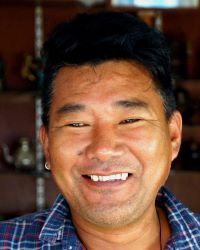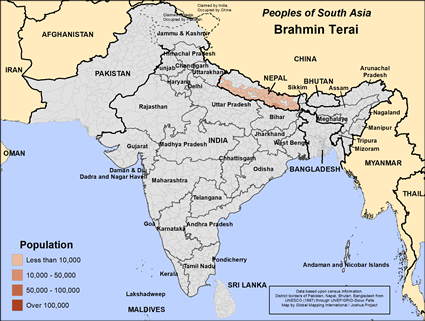Brahmin Terai in Nepal

Photo Source:
Copyrighted © 2025
Isudas All rights reserved. Used with permission |

Map Source:
People Group data: Omid. Map geography: UNESCO / GMI. Map Design: Joshua Project
|
| People Name: | Brahmin Terai |
| Country: | Nepal |
| 10/40 Window: | Yes |
| Population: | 108,000 |
| World Population: | 108,000 |
| Primary Language: | Maithili |
| Primary Religion: | Hinduism |
| Christian Adherents: | 0.00 % |
| Evangelicals: | 0.00 % |
| Scripture: | New Testament |
| Ministry Resources: | Yes |
| Jesus Film: | Yes |
| Audio Recordings: | Yes |
| People Cluster: | South Asia Forward Caste - Brahmin |
| Affinity Bloc: | South Asian Peoples |
| Progress Level: |
|
Introduction
The Terai Plains region straddles India, Bangladesh, Bhutan and Nepal where it is the most productive district. A large part of the economy now involves logging. Typically they strip away the logs for lumber then replace the trees with farmland, thus making agriculture foundational to the economy. Nepal is a Hindu country. There is a small Brahmin community in the Terai Plains. Indeed, the Brahmins are so few that they are hardly mentioned in the context of this region of Nepal, but they are undoubtedly a leading community in the local economy because the rate of literacy among Brahmin men is well above Nepal's national average.
Ministry Obstacles
When there are no Christians in a community, gospel workers must start at the very beginning. Ideally, they will win local leaders to the Lord, opening the way for all who follow them to do the same. Caste is an issue because most Nepali Christians are not from high-caste communities like the Terai Brahmins.
Outreach Ideas
Pray for the Followers of Christ
Pray for the Entire People Group
Pray that the true God will reveal himself to this community and use Terai Brahmins to preach and teach about Christ throughout Nepal.
Pray that Brahmins will listen to Christian radio, view Christian films and become interested in Christian correspondence courses and the Bible itself.
Pray for Brahmin disciples to make more disciples among every Brahmin community in Nepal.